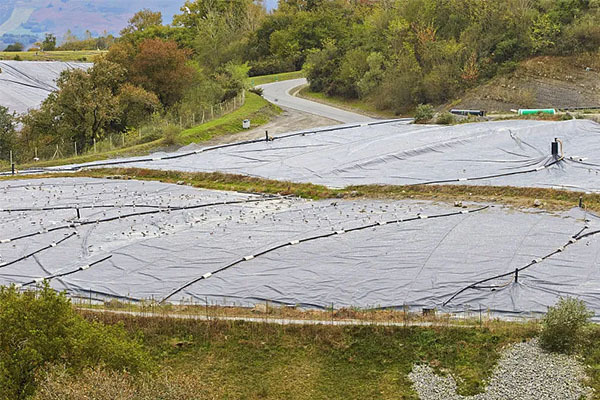Understanding Geogrid Welding Machines: A Key Tool in Automotive Repair
Release time:
2025-05-28
In the automotive repair industry, efficient and reliable equipment is crucial for ensuring the quality and longevity of vehicle repairs. Among these essential tools is the geogrid welding machine, designed specifically for the welding of geogrid materials. These machines play an important role in various applications, particularly in reinforcing structures and improving the stability of automotiv
In the automotive repair industry, efficient and reliable equipment is crucial for ensuring the quality and longevity of vehicle repairs. Among these essential tools is the geogrid welding machine, designed specifically for the welding of geogrid materials. These machines play an important role in various applications, particularly in reinforcing structures and improving the stability of automotive components.
Geogrids are synthetic materials that consist of a network of interconnected ribs or bars, typically made from high-density polyethylene or polypropylene. They are primarily used in the construction and automotive sectors for soil reinforcement, stabilizing slopes, and enhancing the load-bearing capacity of roads and pavements. In the context of automotive repair, geogrid welding machines enable the efficient bonding of these materials, ensuring they adhere properly to the surfaces they are intended to reinforce.
Operating a geogrid welding machine requires knowledge of its features and functions. The welding process typically involves using heat to melt the edges of the geogrid material, which can then be pressed together to create a strong, durable bond. The machine is equipped with various settings that allow operators to adjust the temperature and pressure based on the specific requirements of the task at hand. This versatility makes geogrid welding machines suitable for a wide range of applications, from small repairs to large-scale projects.
One of the key benefits of using a geogrid welding machine is the efficiency it brings to the welding process. By ensuring a strong bond between geogrid materials and other components, these machines reduce the likelihood of failures or complications that could arise from inadequate adhesion. Moreover, the use of geogrids can enhance the overall performance of automotive parts, leading to improvements in their durability and lifespan. Consequently, investing in a high-quality geogrid welding machine can yield significant long-term benefits for automotive repair professionals.
In addition to their operational advantages, geogrid welding machines also support sustainability efforts within the automotive industry. By reinforcing existing components rather than replacing them, businesses can reduce waste and promote more environmentally friendly practices. This aligns with the growing trend towards sustainable repair techniques that prioritize resource conservation and minimal environmental impact.
In conclusion, understanding the functionality and advantages of geogrid welding machines is essential for professionals in the automotive repair sector. These machines not only enhance the quality and durability of repairs but also contribute to sustainable practices within the industry. By incorporating a geogrid welding machine into their toolkit, automotive repair businesses can improve operational efficiency and provide high-quality service to their customers.
Geogrids are synthetic materials that consist of a network of interconnected ribs or bars, typically made from high-density polyethylene or polypropylene. They are primarily used in the construction and automotive sectors for soil reinforcement, stabilizing slopes, and enhancing the load-bearing capacity of roads and pavements. In the context of automotive repair, geogrid welding machines enable the efficient bonding of these materials, ensuring they adhere properly to the surfaces they are intended to reinforce.
Operating a geogrid welding machine requires knowledge of its features and functions. The welding process typically involves using heat to melt the edges of the geogrid material, which can then be pressed together to create a strong, durable bond. The machine is equipped with various settings that allow operators to adjust the temperature and pressure based on the specific requirements of the task at hand. This versatility makes geogrid welding machines suitable for a wide range of applications, from small repairs to large-scale projects.
One of the key benefits of using a geogrid welding machine is the efficiency it brings to the welding process. By ensuring a strong bond between geogrid materials and other components, these machines reduce the likelihood of failures or complications that could arise from inadequate adhesion. Moreover, the use of geogrids can enhance the overall performance of automotive parts, leading to improvements in their durability and lifespan. Consequently, investing in a high-quality geogrid welding machine can yield significant long-term benefits for automotive repair professionals.
In addition to their operational advantages, geogrid welding machines also support sustainability efforts within the automotive industry. By reinforcing existing components rather than replacing them, businesses can reduce waste and promote more environmentally friendly practices. This aligns with the growing trend towards sustainable repair techniques that prioritize resource conservation and minimal environmental impact.
In conclusion, understanding the functionality and advantages of geogrid welding machines is essential for professionals in the automotive repair sector. These machines not only enhance the quality and durability of repairs but also contribute to sustainable practices within the industry. By incorporating a geogrid welding machine into their toolkit, automotive repair businesses can improve operational efficiency and provide high-quality service to their customers.
Next Page






